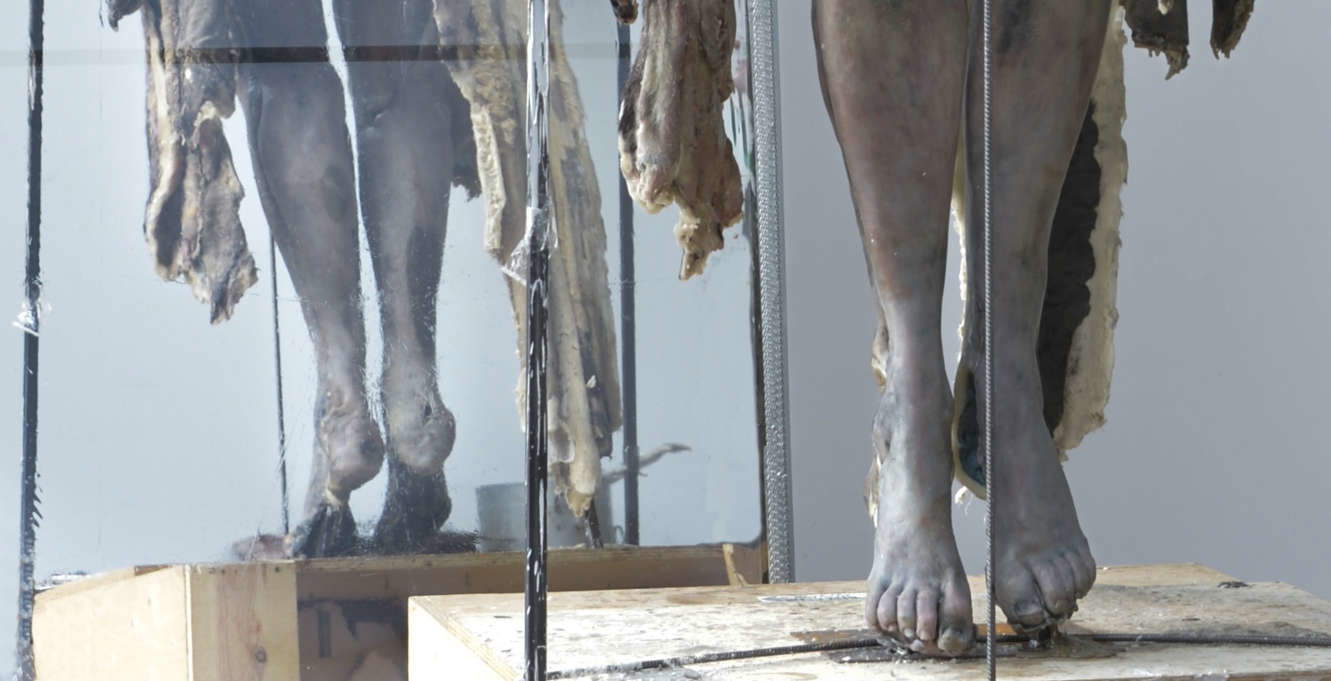Belgian artist Berlinde De Bruyckere (Ghent, 1964), one of the big names in international art, is featured in a collateral event of the 2024 edition of the Venice Biennale. It is an exhibition entitled City of Refuge III, conceived specifically for the sacred spaces of theAbbey of San Giorgio Maggiore, the 16th-century Benedictine church located on theIsland of San Giorgio Maggiore in Venice and one of the city’s most important examples of Palladian architecture. The exhibition, scheduled to run from April 20 to Nov. 24, 2024, is produced in collaboration with Benedicti Claustra Onlus, the nonprofit branch of the Benedictine Community, and its director, Carmelo A. Grasso, who together with Ory Dessau and Peter Buggenhout, form the curatorial team.
Oscillating between transcendence and material immanence, City of Refuge III is based on three new groups of works by De Bruyckere intended to respond to the monumental architecture, function, symbolism and history of the church. On display are an installation of sculptures by Archangels in the nave and aisles, a large installation in the church’s Sacristy, and sculptural works in the monastery’s gallery corridor.
City of Refuge III borrows its title from a Nick Cave song, and represents the third in a series of exhibitions by the artist thematizing art as a place of sanctuary and refuge, reinforced here by the spiritual intensity of the place. The first in the series, City of Refuge I, was held in 2023 in Flassans-sur-Issole, France, while City of Refuge II was held at the Diocesan Museum in Freising, Germany.
De Bruyckere’s practice has always sought to create hybrid forms with human, animal and organic characteristics. Drawing on the legacy of the Old European masters, the Flemish Renaissance, Christian iconography, as well as mythology and cultural traditions, the artist superimposes existing stories with new narratives suggested by current events to create a psychological terrain of pathos, tenderness and unease. Investigating the dualities of love and suffering, danger and protection, life and death, his works transcend theological connotations, transferring them into the realm of the universal and the profane.
The first group of works occupying the basilica of St. George’s Abbey highlights the archetype of the archangel who appears as a veiled and hybrid figure, juxtaposing the human with the divine, the earthly with the celestial, the temporal with the eternal. It consists of an installation of archangels, each of which emerges from a modular sculptural group consisting of an irregular pillar-shaped pedestal with silver patina, a slanted mirror screen that multiplies the figure of the archangel and its surroundings, and a monumental banner that deepens the ritual aspect of the setting and works.
In the Sacristy, De Bruyckere displays an installation of metal welding tables on which felled or dead tree trunks are cast in wax. The installation conveys a post-apocalyptic scenario in which fragments of still life undergo further freezing, while opening up a horizon of rejuvenation and rebirth, giving the situation the potential for growth. Interfacing with the Sacristy’s woodwork, the tree installation is intended to provide a precarious environment for Giuseppe Porta’s altarpiece known as the Salviati, depicting the Presentation in the Temple.
A third group of carvings in the monastery gallery comes from the exceptional carvings of 16th-century Flemish carver Albert van den Brulle, who decorated the Basilica’s choir with walnut bas-reliefs depicting the life of St. Benedict. De Bruyckere responded to these 16th-century elements by mounting a sequence of new wall showcases in which the motifs of van den Brulle’s bas-reliefs have been taken up and fossilized for a present-day context.
Finally, also in the monastery lobby, the exhibition includes recent works by the artist, further contextualizing the new works produced for this show, including examples from De Bruyckere’s Anderlecht sculptural series and collages from the It almost seemed a lily series.

 |
| Berlinde De Bruyckere will be featured in a major Biennale collateral |
Warning: the translation into English of the original Italian article was created using automatic tools. We undertake to review all articles, but we do not guarantee the total absence of inaccuracies in the translation due to the program. You can find the original by clicking on the ITA button. If you find any mistake,please contact us.